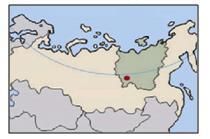UPSC Exam > UPSC Tests > Test: Minerals And Rocks - UPSC MCQ
Test: Minerals And Rocks - UPSC MCQ
Test Description
10 Questions MCQ Test - Test: Minerals And Rocks
Test: Minerals And Rocks for UPSC 2025 is part of UPSC preparation. The Test: Minerals And Rocks questions and answers have been prepared
according to the UPSC exam syllabus.The Test: Minerals And Rocks MCQs are made for UPSC 2025 Exam.
Find important definitions, questions, notes, meanings, examples, exercises, MCQs and online tests for Test: Minerals And Rocks below.
Solutions of Test: Minerals And Rocks questions in English are available as part of our course for UPSC & Test: Minerals And Rocks solutions in
Hindi for UPSC course.
Download more important topics, notes, lectures and mock test series for UPSC Exam by signing up for free. Attempt Test: Minerals And Rocks | 10 questions in 10 minutes | Mock test for UPSC preparation | Free important questions MCQ to study for UPSC Exam | Download free PDF with solutions
Detailed Solution for Test: Minerals And Rocks - Question 1
Detailed Solution for Test: Minerals And Rocks - Question 2
Test: Minerals And Rocks - Question 3
Which mineral group is abundantly found in the earth’s crust?
Detailed Solution for Test: Minerals And Rocks - Question 3
Detailed Solution for Test: Minerals And Rocks - Question 4
Test: Minerals And Rocks - Question 5
Rocks that were originally either sedimentary, igneous or metamorphic and have been changed further by heat and pressure are called:
Detailed Solution for Test: Minerals And Rocks - Question 5
Test: Minerals And Rocks - Question 6
Which process involves the transformation of sediment deposits into sedimentary rocks characterized by distinct layers?
Detailed Solution for Test: Minerals And Rocks - Question 6
Detailed Solution for Test: Minerals And Rocks - Question 7
Detailed Solution for Test: Minerals And Rocks - Question 8
Test: Minerals And Rocks - Question 9
The minerals that do not contain metal contend are known as
Detailed Solution for Test: Minerals And Rocks - Question 9
Detailed Solution for Test: Minerals And Rocks - Question 10
Information about Test: Minerals And Rocks Page
In this test you can find the Exam questions for Test: Minerals And Rocks solved & explained in the simplest way possible.
Besides giving Questions and answers for Test: Minerals And Rocks, EduRev gives you an ample number of Online tests for practice
Download as PDF




















